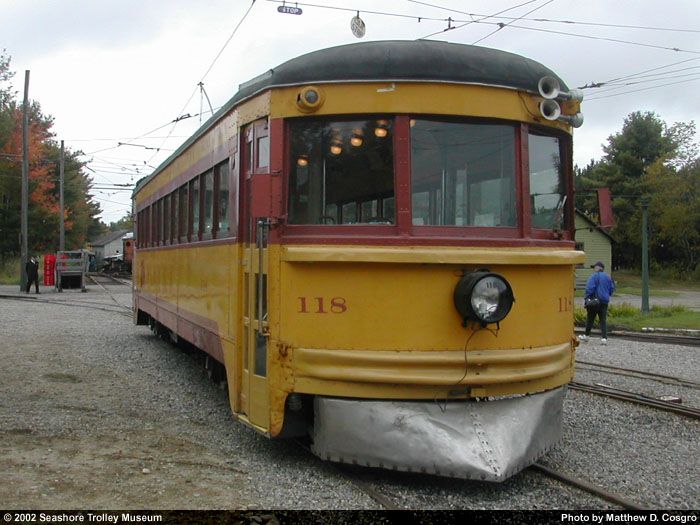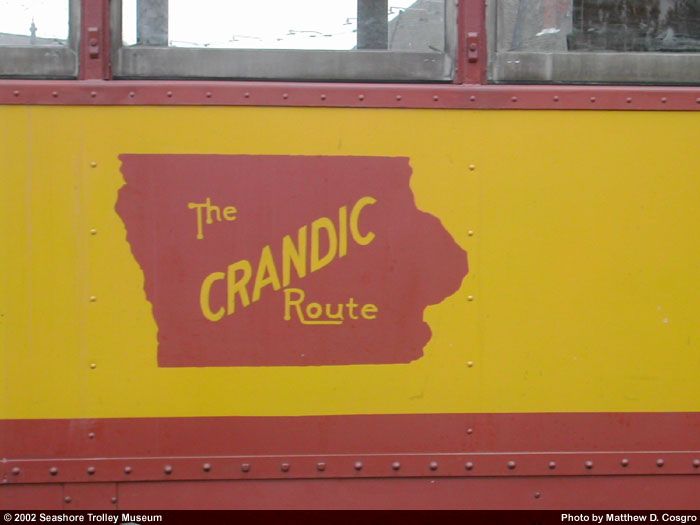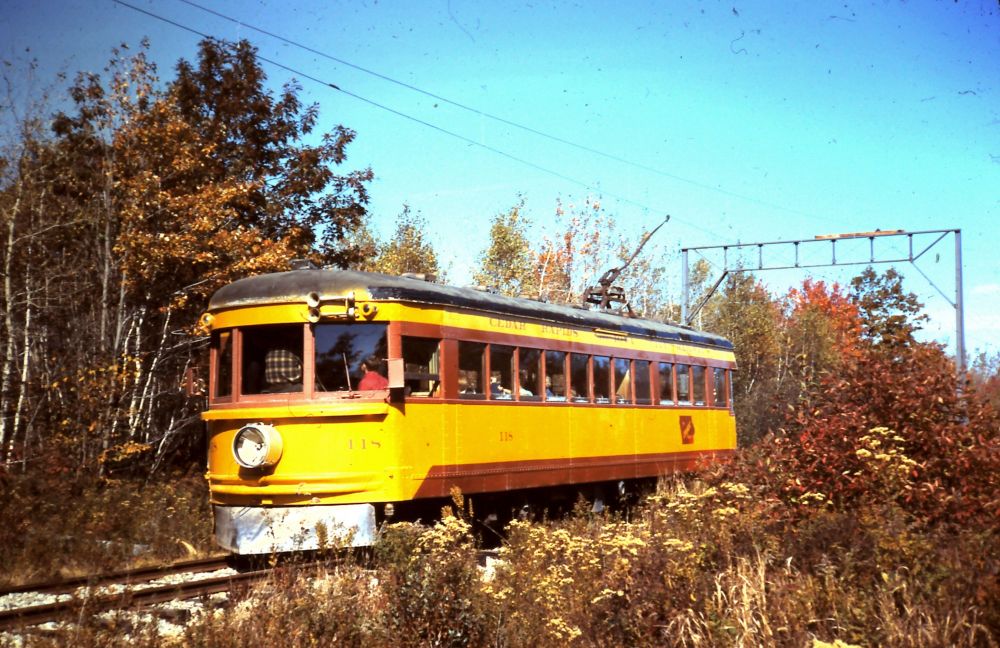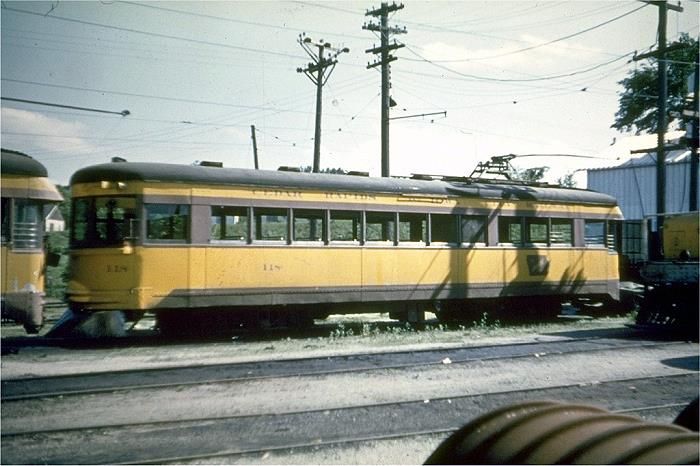
- Builder
- Cincinnati Car Co.
- Description
- High-speed interurban
- Secondary Use
- None
- Type
- Interurban Cars
- Year
- 1930
- Retired from Service
- 1954
- Acquired by the Museum
- 1954
- Fund
- 652
- Sponsor/Manager
- None
CRANDIC 118
From Iowa
History
The Cincinnati & Lake Erie Railroad was formed in 1930 through a merger of three smaller interurbans to form a through line between Cincinnati and Toledo, Ohio, with a connection via the Eastern Michigan Railway to Detroit. The C&LE, led by Thomas Conway, undertook improvements to compete more effectively with automobile travel. In 1930, the Cincinnati Car Co. built for the Cincinnati & Lake Erie Railroad a fleet of 20 radically new high speed lightweight cars constructed largely of aluminum and equipped with four 100 horsepower motors. Numbered 110 – 129, they were capable of speeds of 60 to 80 miles per hour on less than first class track. The cars featured a rear picture window and distinctive horizontal fenders on the rear. No. 118 was one of 10 cars with a small parcel compartment near the rear. The lightweights operated on long runs, including a 285 mile trip between Cincinnati, OH and Detroit, MI. The C&LE painted the cars bright red and called the cars “Red Devils.” The C&LE publicized the new cars with a photo of the Red Devils, at a reputed speed of 97 mph, outrunning an airplane in a race. The C&LE high-speed cars were models for a fleet of 35 almost identical lightweight cars built for the Indiana Railroad in 1931. One of the Indiana Railroad cars later became Lehigh Valley Transit #1030 which is also at Seashore. The steam railroads followed a few years later with lightweight materials for their streamliners. Abandonment of the C&LE began in 1937. In 1939, the C&LE sold six of the Red Devils to the Cedar Rapids & Iowa City Railway (commonly called the CRANDIC) and 13 of the cars to the Lehigh Valley Transit in Pennsylvania.
The Cedar Rapids and Iowa City was one of the most financially successful interurbans over a long period of time. Cedar Rapids and Iowa City lie 27 miles apart on a north-south axis in eastern Iowa. On this route, with 14 intermediate stops, the high-speed cars shortened the schedule from 60 minutes to 50 minutes. No. 118 kept its former C&LE number. The six former C&LE lightweight cars provided most of the passenger service on the CRANDIC. The former C&LE cars survived in this service until 1953. Because of corrosion where the aluminum came in contact with other metals, the CRANDIC replaced the aluminum sides with stainless steel. The CRANDIC also replaced the seats in No. 118. Originally, one-man cars, the lightweights were operated as two-man cars on the CRANDIC. Passenger service ended in 1953, but the CRANDIC prospers today as a diesel-operated freight railroad.
Seashore purchased No. 118 in 1954. Various restoration projects have taken place on the car. Other museums had acquired some CRANDIC highspeeds and converted them back to their C&LE livery. So, Seashore decided to keep No. 118 in its yellow CRANDIC paint scheme and made a commitment to the CRANDIC management to keep it in their colors. No. 118 and its near-twin, Lehigh Valley Transit No. 1030, are probably Seashore’s fastest cars.
Technical Information
- Seats: 38
- Control: PC-12 (CJ-127)
- Brakes: SME (M33)
- Compressor: DH-25
Trucks
- Number: 2
- Manufacturer: Cincinnati
- Model: ABC74D
Motor
- Number: 4
- Manufacturer: General Electric
- Model: 706A1
Weight and Dimensions
- Length: 44’ 3.00"
- Width: 8’ 10.00"
- Height: 13’
- Weight: 48300 lbs.
Additional Images

Matthew D. Cosgro in 2002

Matthew D. Cosgro in 2002

Matthew D. Cosgro in 2002

Russel Monroe in Oct. 1973

At Cedar Rapids IA in June 1953 - Joe Testagrose at newdavesrailpix.com

At Springfield, OH – newdavesrailpix.com
© 1998 - 2026 New England Electric Railway Historical Society. All Rights Reserved.